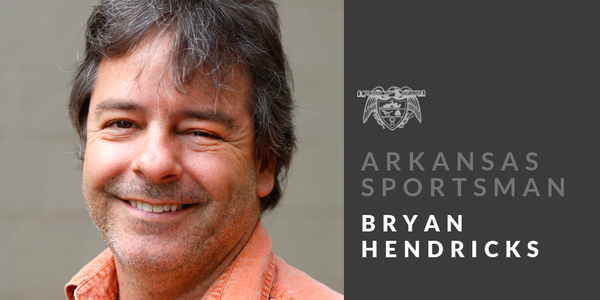Success exists in shades of gray.
My expectations of success were mixed Friday when Bob Snider of Roland and I met for a duck hunt at Bayou Meto Wildlife Management Area. It was 5:20 a.m., and we were far more excited than two men should be at such an early hour.
Ducks had finally arrived in Arkansas over the last couple of weeks, and they are concentrating heavily in flooded timber. The hunting has been very good at Bayou Meto, so Snider and I resolved to catch it for a morning at its best.
Snider, a prominent artist well known for his impressionistic depictions of horse racing, fly fishing and duck hunting scenes, is an aficionado of great newspapers, folk music and classic rock, and he is also a lover of fine guitars.
“Philip Martin wrote a column recently about his guitar collection, and that stirred in me a lifelong desire,” Snider said. “I have some good guitars, but I’ve always wanted one really great guitar, so I went out and got one.”
The morning started with an obligatory sausage, egg and cheese toaster and coffee at McSwains Sporting Goods. Practically every duck hunter in Central Arkansas stops at McSwains en route to Bayou Meto and private duck clubs in the Golden Triangle between Humnoke, Humphrey and Stuttgart. It is the most reliable source of duck hunting scuttlebutt in the region.
The next move was a wrong move, specifically a wrong turn at Wabbaseka. A brown sign on the highway directs you over the railroad tracks to the WMA, but like a siren, it leads you into a void and strands you at a cemetery. There is no further clue to point the way.
“I’ve made this mistake a dozen times. You think I’d learn,” I growled. “We’re supposed to turn at Altheimer, but I’m wise to their dirty tricks! I know a back route!”
A few minutes later, we rolled into the Long Bell Access. A fair number of vehicles were present, but not nearly as many as I expected given the excellent duck hunting of late.
The sun was well up by then, but I had planned on the late arrival. I like to get to Bayou Meto after other hunters are in the woods. I listen for shooting and go somewhere else. It usually works out for me but, well, more about that later.
I wanted go southwest into the woods, but it looked dry. I flagged down a hunter driving out of the WMA.
“How far do you have to go back there til you hit water?” I asked.
“About 150 yards,” the hunter said, “but I recommend going the other way.”
“A lot of people back there,” I said, noting the barrage of distant gunfire.
“Not as many as you think, and they’re all way back. You can stop short and call in some birds.”
It’s never a good idea to disregard advice from someone who knows what he’s talking about, but I’m stubborn that way sometimes. My compass pointed southwest.
We did indeed hit water within 150 yards, but it was only about ankle deep, and distance did not make it deeper.
“This looks like a pretty good little hole right here,” Snider said, signaling that he had walked as far as he intended.
A few ducks flew passed low occasionally. I turned them but couldn’t land them. After a drake turned away, I suspected I was too near the hole. I backed away about 20 yards and then watched disdainfully as the drake fluttered through the trees and into the hole, shielded from gunfire by limbs. When I turned, the drake launched back out of the hole, and that was the last good chance we had.
After about an hour, Snider said, “I think we killed all these.” In other words, he was ready to leave.
“I didn’t do my due diligence finding out beforehand how much water is in here,” I said. “That’s a party foul. I apologize for that.”
“I’ve been on this hunt many, many times,” Snider said, laughing. “The main reason I wanted to come was to reacquaint myself with the way the duck woods look in winter. I wanted to re-imprint the exact shade of gray, but I had forgotten the subtle shades of red and green. Those little details are important. So, I’m glad we came. I didn’t want to clean any ducks today, anyway.”
Credit: Source link






























